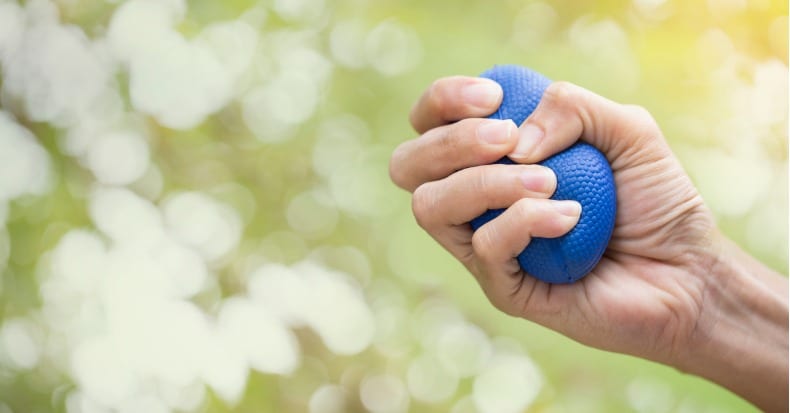There are many conditions that affect the hand and wrist: tendonitis (strains), ligament injuries (sprains), as well as carpal tunnel syndrome (CTS). A contributing factor for these conditions is inflammation caused by overuse and repetitive motions. That’s why your doctor of chiropractic recommend taking mini-breaks (30 seconds to one minute) throughout a busy workday to give the wrist a chance to rest. The following exercises are also helpful for self-managing wrist pain (in addition to chiropractic care):
- SHAKE: As if to dry off your wet hands, shake your arms and hands vigorously.
- FIST/BEAR-CLAW/FAN: This three-step exercise includes making a firm fist, then a bear-claw (bending only the ends or tips of the fingers/thumbs), and lastly, opening the hand wide and fanning or spreading the fingers out.
- THUMB-FINGER “O’s”: Make an “O” by touching the tip of the thumb to each of the four fingertips. Vary the speed and pressure. Mix it up.
- WRIST BENDS (OPTION #1): Sit or stand, elbow straight, palms up, and bend the hand toward you (fingers pointing up). Bend the wrist back so the fingers point down. Hold each position for about five seconds and repeat five to ten times. Repeat on your opposite hand to add pressure to the end-range stretch (to “super-stretch”).
- WRIST BENDS (OPTION #2): Repeat Exercise 4 but with the palms down.
- TENDON TETHER: Hold the arm out in front and bend the elbow 90°, palm facing you. Bend the wrist back so the palm faces upward. With the other hand, pull down on each finger while slowly straightening the elbow until the elbow is fully extended (arm straight) and hold for five seconds. REPEAT on each finger and thumb (both hands).
- WRIST RESISTANCE: Rest the forearm on the arm of a chair (elbow bent 90°) palm down, with the wrist and hand extended off the end of the arm (an edge of a table works too). Place the other hand across the knuckles (to form a “+” sign). First, raise the bottom hand against the resisting/top hand slowly through the full range of motion (ROM) and then reverse it by slowly lowering the hand while STILL RESISTING as you move back down toward the floor (full ROM). Repeat five to ten times slowly and repeat on opposite side. Perform the same exercise with the palm up and repeat on both sides.
- HAND SQUEEZE: Hold a soft rubber ball or a pair of balled up socks and slowly squeeze to a maximum tolerance and SLOWLY release it. One repetition should take at least five seconds. Repeat five to ten times with each hand.
When exercising, THINK ABOUT what you are doing (visualize the movement in your head) to enhance the neuromotor response for the best results. Your doctor of chiropractic can train you on these and many other exercises to facilitate CTS/wrist injury recovery.


